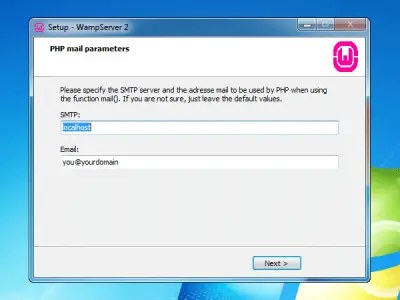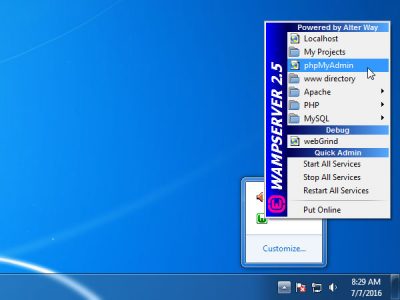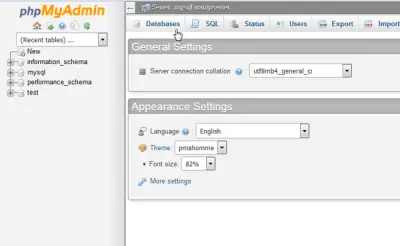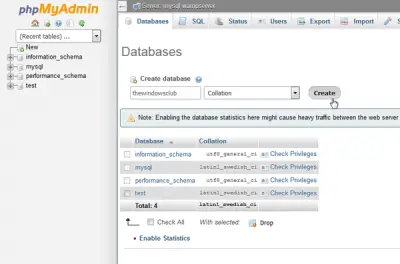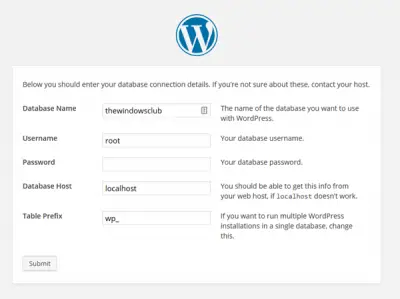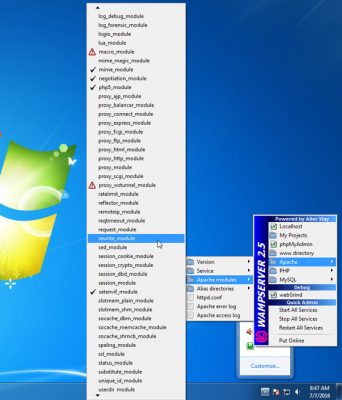WordPress has gathered a lot of fans from across the globe and currently, it is powering more than a third of all the websites, according to a report. It has acquired popularity due to its great user-friendly interface, lot of free/paid themes/plugins, a wide support eco-system – and most importantly it is completely free.
If you are going to launch your first website on WordPress and you do not have much information or experience about this CMS, then instead of trying out themes and plugins on a live website, it is far better to install WordPress on a local computer and test everything before making it live. WAMP is a popular software available for Windows that will let you install WordPress on Windows for free. We have seen, how you can create a WordPress site on Windows easily with Microsoft WebMatrix – now let us see how to use WAMP.
In this post, WordPress indicates WordPress.org or the self-hosted WordPress and not WordPress.com.
What can you do using WAMP
Simply put, you can do almost everything a regular WordPress user can do. Basically, you will get a WordPress website on your local computer, which will let you install themes and plugins, develop and test new themes/plugins, write posts, etc. But, you cannot index this website in any search engine. Although you will get an option related to indexing, this is not possible unless you make the site live.
Read: Best free personal web hosting sites.
Precautions
There are many ISPs, who provide a shared internet connection, which means that other people on the same network can access your shared folder. Database created with WAMP is shared. Therefore, other people can search for your computer being the same network user and can access that particular thing. In fact, there are some third-party software which make these things easier. If other users use such a tool, they can easily get your site’s database that is hosted on the local computer.
Install WordPress on Local Computer using WAMP
WAMP basically stands for Apache, PHP, MySQL on Windows. As said, it has everything required to install WordPress. However, it doesn’t support Windows XP or Windows Server 2003. You need later versions to use WAMP on your Windows machine.
To begin, download WAMP to your PC. WAMP 3 has been released, which comes with Apache 2.4.17, MySQL 5.7.9 and PHP 7. However, if you download the 32-bit edition, you will get PHP 5.6.15.
It is very important to know your machine’s architecture (32-bit or 64-bit) and download the corresponding WAMP setup file. After downloading, start the installation. The installation process is easy – you just have to follow the screen options.
During the installation, you will have to select your default browser. It will show a popup labeled, Please choose your default browser. If you are not sure, just click Open. Here, you can either select a browser like Chrome, Firefox, IE, etc. or you can just hit the Open button.
After that, you have to specify the SMTP server and mail address. By default, it is localhost and you@yourdomain. Just let it be and hit the Next button.
Now, launch the WAMP. You should get a green WAMP icon in your system tray. However, some people have faced MSVCR110.dll is missing error while launching WAMP on Windows.
If you have got the green WAMP icon, do follow the following steps. Click on the WAMP button and select phpMyAdmin.
It will open your default browser unless or until you have set Explorer as your default browser. Here, you have to create a database for your site. To do this, click on the Database button on your screen.
Now, enter the database name, select Collation from the drop-down menu and hit the Create button.
You have to enter a unique database name. Otherwise, there will be some conflicts.
Now, download the latest WordPress setup file from the official WordPress website. After downloading, extract the ZIP file and rename the folder as you wish. It can be WP, BLOG, WEBSITE, or anything. Now, open C > wamp > www folder and paste the extracted folder.
Having done that, open your browser and enter the following address-
localhost/wp
Here wp is my WordPress setup folder name. Do not forget to replace it with the folder name that you have used in the step above.
Next, you have to select your preferred language and hit the Continue button.
On the next screen, just click on Let’s go button. Now, you have to enter Database Name, Username, Password, Database Host and Table Prefix.
- Database Name: the name you have used while creating the database. Do not use anything else. Otherwise, it won’t connect to your database.
- Username: root (Do not use anything else)
- Password: blank
- Database Host: localhost
- Table Prefix: wp_ (you can use others with an underscore).
After filling up this form, just click on Submit button.
Then, you will get Run the install option if you have done everything correctly. Now, your site information is needed, where you have to enter the desired site title, login username, password, email ID, etc. After that, it will take a couple of moments to install WordPress on your localhost. After installation, you can log in to the WordPress dashboard using your username and password. The login URL would be like this,
http://localhost/[folder_name]/wp-admin
Use Any Permalink Structure in WAMP
If you install WordPress on Windows using WAMP, it will use /index.php/%year%/%monthnum%/%day%/%postname%/ as your default permalink structure. However, there are some plugins that do not work if you use any structure other than the default one. You can follow this guide to use any other URL structure in WordPress while using WAMP.
Just click on WAMP icon in your system tray > Apache > Apache modules > rewrite_module.
After clicking on the rewrite_module, you can change the URL structure.
Download: WAMP can be downloaded here at wampserver.com. The latest version of WordPress can be downloaded here.
Instant WordPress is another free tool that can help you install WordPress on Windows. This post will help you if the WAMP Server icon is always Orange.
Read next: How to Install AMPPS Stack on Windows 11.
